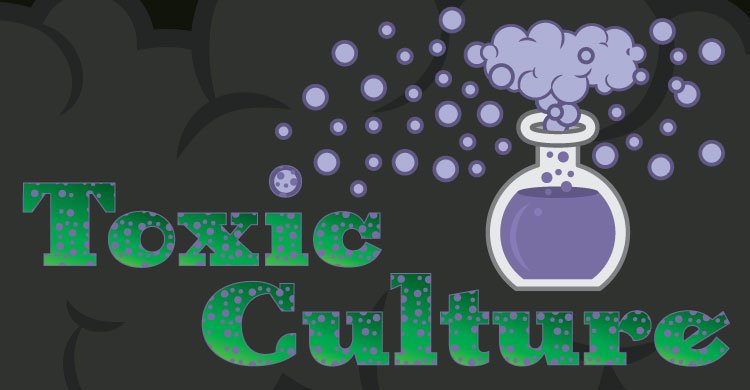In our book, Working with Difficult and Resistant Staff, we talk about the importance of addressing problems and the people causing these problems in order to nurture a productive school culture. We also share strategies for strengthening the positive people in the school so they can stay strong when facing negative colleagues and situations. So, just what is this element called school culture, and what does it have to do with the success of the school?
What Is School Culture?
School culture has been termed the “soul of the school.” It is an attribute that impacts the day-to-day operation of the school, helps determine the success of the school in implementing changes, and ultimately helps determine the success of the students.
School Climate versus School Culture
The concepts of school climate and culture are sometimes confused and presented as the same thing. Even though they are related, they are different and need to be addressed in different ways. Here’s a brief definition of each term.
- School Climate: School climate is the feeling, the tone, the mood of the school. Climate is variable and can change in a relatively short time. Climate is a subset or building block of school culture.
- School Culture: School culture is the personality of the school, the way people do business, and the semipermanent condition at the school. It is the summation of multiple climate conditions and can be changed through long-term and sustained strategies and efforts.
The Power of Productive Cultures
Positive or productive school cultures contribute to the success of the teachers and the students. These are schools where people work together and collaborate for the common good; where efforts that fail are learning experiences; where the leader values the faculty and tries to find ways to support them appropriately. In productive cultures, the faculty is continually striving to understand what is happening in the school and continually working to get better.
The Impact of Toxic Cultures
Toxic school cultures are places where the conditions are so negative they become deadly to the professional and emotional lives of those who work there. The faculty may be so poisoned that they deliberately work to undermine each other. New ideas and innovations are smothered before they even have a chance to get started. Teachers quickly learn not to “stick their necks out,” share new ideas, or question how the school functions or operates.
The Impact of Status Quo Cultures
A third type of culture is one that slowly and gradually sucks the life out of people. We call that type a status quo culture. In a status quo culture, people don’t see the issues, they make excuses for their challenges, and people don’t take responsibility for the shortcomings of the school. Because of the gradual decline of status quo cultures, people may get lulled to sleep and not notice the culture has slipped into its present state. In status quo cultures, the faculty may still believe they are doing well and it’s the families’ or the students’ fault their work has become more difficult and challenging. It may be hard for them to see their own issues because of their isolation or absence of accurate perception and feedback. Leaders working to improve status quo cultures can find great difficulty unless they can help members of the school see the sense of urgency or need for change.
Diagnosing Culture
The first step in addressing the culture of a school is to diagnose and understand exactly what is happening. While there are many formal instruments available, culture can also be diagnosed informally by the leader or a leadership team, using more qualitative or descriptive methods. We have developed an instrument for diagnosing school culture that examines the culture from three attributes, based on the work of Edgar Schein (2010).
The Three Attributes of School Culture (based on the work of Schein, 2010)
- Artifacts: Artifacts are the visible, observable, tangible, and touchable signs, behaviors, and products displayed or visible in the school. Examples might include signs in the hallways, student projects or work that is posted, the arrangement of the front entrance of the school, how the students move about the school, and many other “products” of the culture. By identifying and analyzing these artifacts, leaders can see what the organization deems as important or critical. Understanding artifacts can provide one insight into understanding the culture.
- Espoused Beliefs and Values: Espoused beliefs and values are what members of the organization say or report as important to them. This might be entirely different than what they actually do or produce (artifacts) or what they really believe (underlying assumptions). Information about the espoused beliefs and values can be gathered by asking individuals and groups to share what they believe, reviewing written policies, holding informal discussions, and observing behaviors. Understanding espoused beliefs and values can provide additional insight into a culture when combined with an analysis of their artifacts.
- Underlying Assumptions: To get to the root of the culture, leaders have to identify and analyze the underlying assumptions. The underlying assumptions are what members of the culture really think or believe that guides their actions. Underlying assumptions can be the unwritten rules, procedures that everyone just knows, people or behaviors that no one questions, or other foundational or deep-rooted assumptions that guide or define the school culture. They can be identified by carefully watching interactions, asking people to identify the unspoken rules, or looking at what “drives” the organization during times of strife and stress. Combined with the information analyzed from examining artifacts and espoused beliefs and values, leaders can get a more comprehensive “picture” or understanding of the culture.
To complete the diagnosis, the leader needs to take the information from the three attributes of culture and combine them, looking for patterns and generalizations to emerge. For example, if people say (espoused beliefs and values) that they are focused on student success, but there is little student work posted, the two elements are out of sync. A leader might assume that they do not really value student success. If people say they appreciate parental partnerships (espoused beliefs and values), but when discussions about parent involvement are squelched by the “old guard” and no one stands up to them (underlying assumptions), then the real cultural belief may not be friendly to parent partnerships.
Beyond Diagnosis to Action
Once the leader (or leadership team) has diagnosed and analyzed the culture, it’s time to develop a plan to begin to impact it. The plan will vary depending on the strength of the present culture, the amount of time the present culture has been in place, the amount of time and resources available to deal with the cultural change, the strength of the leader, and the amount of support available to the leader. If the necessary elements (such as decision-making protocols) are in place, work on improving the culture can be productive. If the necessary elements are not in place, the strength of the old culture can quickly overpower the leader. Understanding the present culture can help leaders develop a plan to successfully start to move it in a more positive or productive direction.
References:
Eller, J. F., & Eller, S. A. (2011). Working With Difficult and Resistant Staff. Bloomington, IN: Solution Tree Press.
Schein, E. (2010). Organizational Culture and Leadership, 4th Edition. Jossey Bass, a Wiley Imprint. SanFrancisco, CA.
[author_bio id=”179″]
[author_bio id=”362″]






